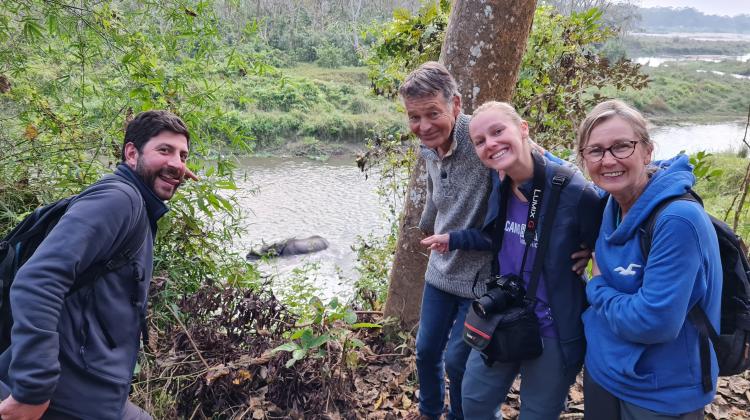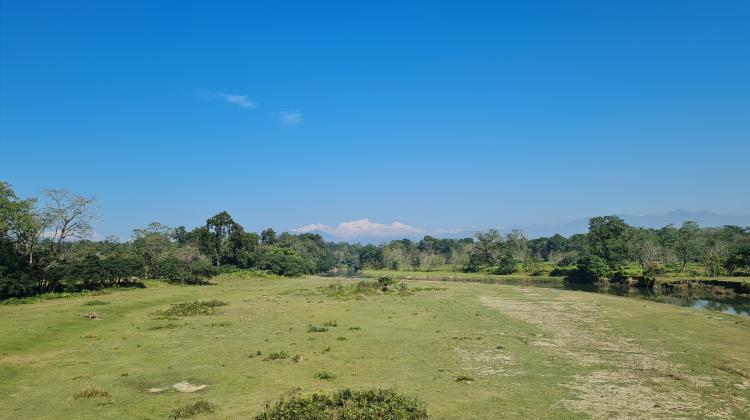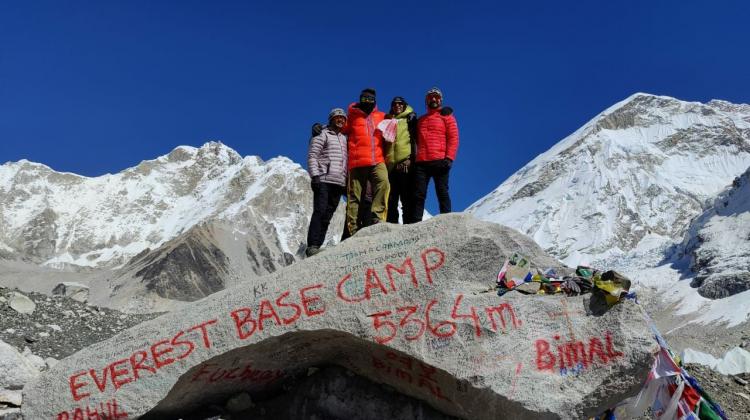- Clothes of a Neutral color are much recommended.
- Light clothing is needed in the day time with a light sweater and warm jacket for the evenings from November to February.
- Pants / Trousers of the loose kind, half or full, are recommended for elephant safaris.
- Comfortable walking shoes, a sun hat, sunscreens & sunglasses etc. are essential. Insect repellents and personal medical requirements should be carried.
- It is highly advisable to travel light with only one small suitcase or a duffle bag. After all, it’s a trip into the wild.
- During the warmer months, swimming suits are recommended.
- A Small flash light is recommended.
- Binoculars can be real handy & adds to the zing in your enjoyment for bird and wildlife viewing.
(In case of rafting and a Jungle Safari combination trip, please visit our ‘rafting in Nepal’ section for more details on Rafting and its necessary information.
Contact for details: info@nepalayatreks.com
With lush green forests and exotic fauna which include the rare one horned rhino, the Royal Bengal tiger, crocodiles, elephants, deer and over four-hundred species of birds, the Chitwan National Park has on display one of the finest wildlife scenarios in Asia. Geographically located in the Terai belt, encompassed by the Churia Hills and adjacent to the Rapti, Reu and Narayani rivers, the park covers an area of 932 sq. km. It was established in 1973 and is the oldest National Park in Nepal. The park became a World Heritage Site in 1984.
During the late 19th century, Chitwan was used as a private hunting reserve of the Rana Prime Ministers. As early as 1911, King George V led a hunting party to Chitwan that culminated in the killing of thirty-seven tigers and eight rhinos. Between 1933 and 1940, the King and his guests were said to have killed four hundred and thirty-three tigers and fifty-three rhinos. For which if the late king had done that today, pet lovers would have probably surrounded his palace with protests. By the late 1960s the population of rhinos and tigers in Chitwan had decreased even further due to arbitrary hunting and poaching. The declaration of Chitwan as a national park in1973 and the obligation of strict measures against poaching and unauthorized conversion of forest to farmland have given a lifeline to the wildlife population. We now see more wildlife in the park. Currently, Chitwan National Park is regarded as one of the most developed and most commonly visited national parks in Nepal.
 <
<
 <
<

